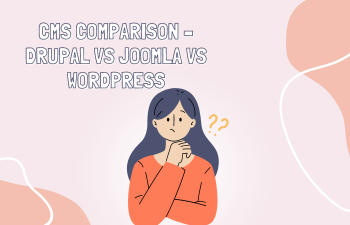 Wordpress
Wordpress
Responsive Layout Advantage
Responsive Layout Advantage
Responsive design is a web design and development technique that creates a site or system that reacts to the size of a user’s screen. Responsive design will optimize a user’s browsing experience by creating a flexible and responsive web page, optimized for the device that is accessing it.
There has been a distinct audience shift towards mobile browsing and responsive design represents the simplest way to reach users across multiple devices and ensures a seamless user experience. 2013 has been hailed as the ‘Year of Responsive Design’, and with the increasing preference of readers to read news online across multiple devices (i.e. tablets and smartphones), responsive design is becoming increasingly important
Increasing your reach to tablet and mobile audiences:
Increasing use of the internet and proliferation of web applications on tablet and mobile devices has been the driving force behind this development. Traditionally users would be re-directed to a device-specific site (e.g. mobile), but responsive design means one site can be implemented across devices.
Tablet sales are expected to exceed 100 million this year, meaning that responsive design has never been so important for those looking to optimize their online content. Indeed, some Byte9 sites are already experiencing up to 40% traffic from tablet and mobile devices, and h4 commercial imperative to accommodate the smaller screen size in a unified design.
Increase sales and conversion rates:
Another benefit of responsive design is that the user has an improved site experience as there is no need for redirection, use of standardized Style Sheets (CSS) across devices, and unified design approach will also create a consistent look and feel. Consistent user experience will have a positive impact on your conversion rates as people are familiar with navigation and site or system use across devices. Responsive design removes some of the barriers that having multiple sites can present, i.e. in functionality, performance, and consistent look and feel.
Consolidate your analytics and reporting:
A single responsive site means that you no longer have to track user journeys, conversion paths, funnels, and redirections between your sites. Site analytics tools like Google Analytics are now optimized to handle multiple devices and responsive reporting. All of your tracking and analytics will continue to function and be condensed into a single report, allowing for easier monitoring and analysis.
Increase your visibility in search engines:
Responsive Design means you can manage one website with a single set of hypertext links; therefore reducing the time spent maintaining your site. This allows you to focus on link outreach with a consolidated Search Engine Optimisation (SEO) strategy. SEO campaigns can be time-consuming and costly, but by creating a responsive site, all of your efforts can be focussed on a single site, with unified strategy and tactics across devices.
Content is vital in SEO, good quality content which is regularly released improves your search engine ranking page positioning, therefore a further advantage of responsive design is that fewer resources can be wasted in low-level duplication of content across sites, the content need only be applied to a single site, increasing your chances or a higher search engine ranking.
Additionally Google suggests that mobile-optimized, responsive sites are featuring prominently in localized search results. This is obviously of huge significance to the high street and online retailers, amongst other burgeoning mobile use cases.
Save time and cost on mobile development:
A primary benefit of adopting a responsive design is that it takes less time than creating an additional stand-alone mobile site, which has been the traditional approach. Testing across several websites also increases your development, support, and maintenance overhead. As styles are re-used and optimized by device standardized testing methodologies can also be used.
Save time and cost on-site management
Clients will also find it much easier and less time-consuming to manage and maintain a single site, with much less content to manage. Additionally, a single administrative interface can easily be optimized, using layout and workflow tools to manage the correct content or site templates that are being used for different devices. Business logic can be applied such that the overall multi-device experience can be significantly enhanced within a single administration.
Enhance user’s offline browsing experience:
Responsive design allows site owners to deliver quality content to audiences across devices, the offline browsing capabilities of HTML5 mean that sites can be easily accessed ‘on the go’. As HTML5 enabled tablets and smartphones proliferate this will become increasingly important. Email newsletters and content contained in hybrid HTML5 web applications will increasingly be consumed on the move and in the absence of an internet connection.
Conclusion:
Responsive design allows you to stay ahead of the trend. As the demand for media-rich mobile internet and apps is burgeoning, several important implications must be addressed; development and maintenance costs, visibility in search engines, and better conversion rates. It is these factors combined with a unified approach to design that will be beneficial for all stakeholders.
With the increase in Tablet sales and smartphone device use exploding, responsive design is key to keeping up ahead of your competitors and establishing market share; content consumption on mobile devices will only continue to balloon as 2013 progresses.

